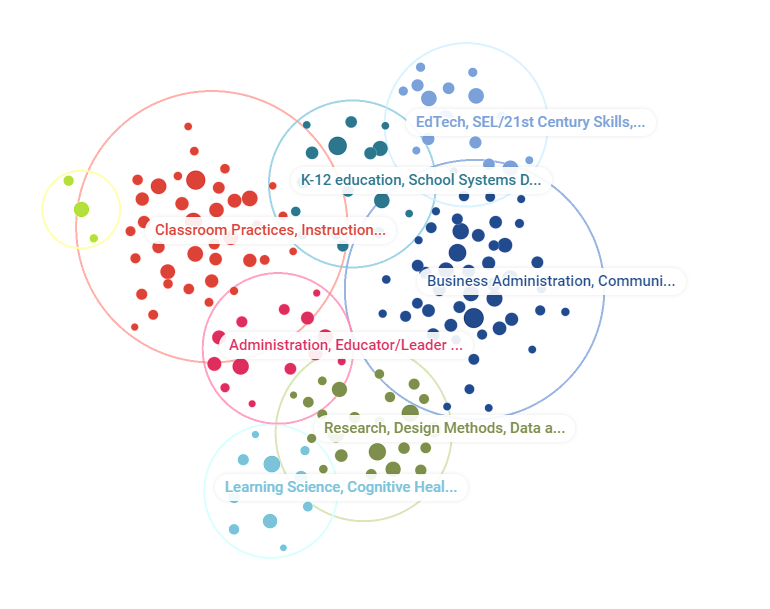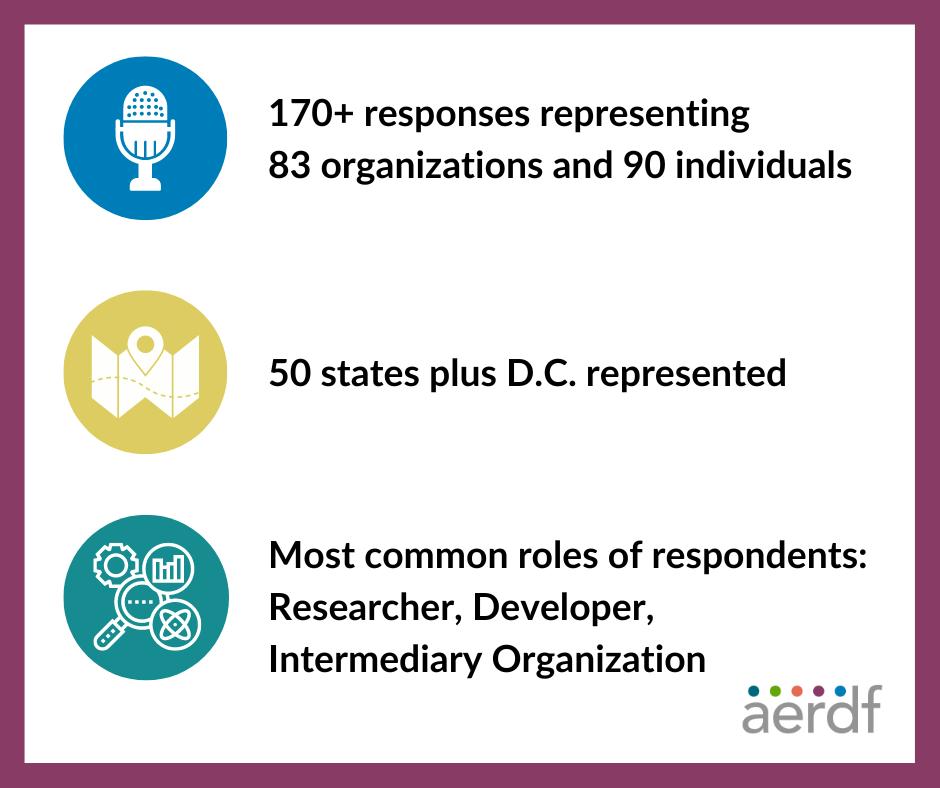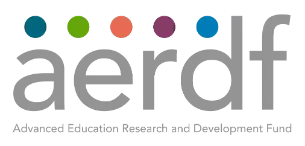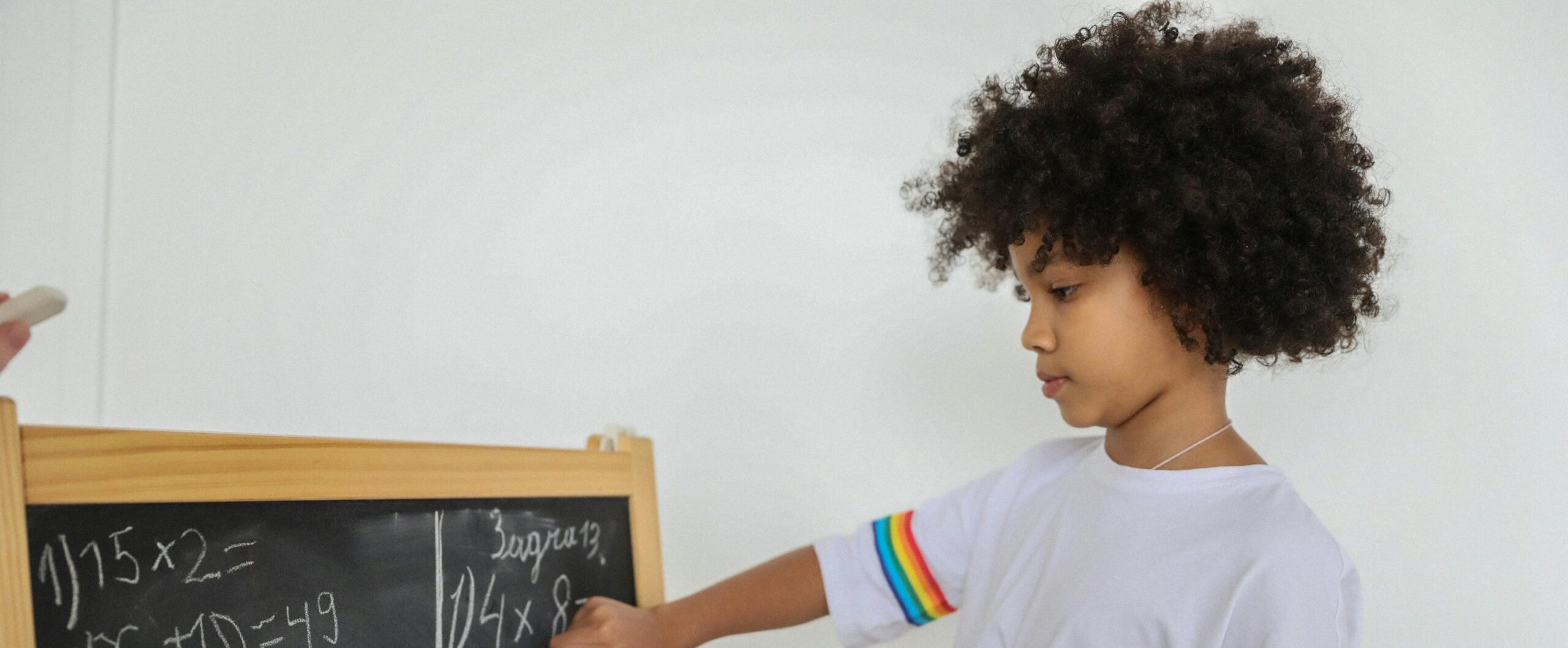We continue our call to education practitioners, researchers, tech developers, and other changemakers immersed in education R&D to add their work to the ever growing map!
As research and development (R&D) in other sectors has produced improvements in our daily lives, most notably the development of COVID vaccines, an increasingly frequent question has been raised: what are we doing to develop similar capabilities within our Pre-K12 education system to ensure each student is on a path to fulfilling their greatest potential? We are still coming into our own as an education R&D field. One of the ways we can strengthen cohesion is by having greater visibility into what’s happening in the field.
This year, AERDF teamed up with a group of PreK-12 field leaders as advisors and The Starfish Institute to launch a participatory mapping process to develop a free, publicly accessible tool that will make it easier to find collaborators, avoid duplicative efforts, and bridge gaps across the field. But just like the field, it is still emerging.
If you are seeking to understand what works for groups of students and under what conditions, and working to build scalable solutions propelled by that learning – we want to hear from you!

Insights for the Education R&D Field
Embarking on this project included a discovery phase (consisting of interviews, a listening session, and a literature scan), launch of a survey inviting respondents to add themselves to the map, virtual convenings with our Ecosystem Mapping Council, creation of a draft map, and some sense-making and adjustments, all to get us to the map available today. Below are a few insights we want to share with the field:
- Involving educators, K-12 schools, and other practitioners will accelerate our progress, address a mismatch between research and classroom needs, and build trust. There are in many cases a disconnect between the problems researchers are trying to solve and the challenges facing students and teachers in classrooms. Not only is the research being conducted often not relevant, but findings are also not reaching schools in the time or format needed. Several map collaborators made an argument for bolstering ”demand” as a way to course correct incentives. Demand from teachers, caregivers, schools, and leaders at all levels for R&D that is relevant, timely, actionable, and context-specific is an important lever for shifting how the ecosystem operates. In future iterations of the ecosystem map, we want to expand the number of education practitioners who participate and see themselves as part of this community.
“There is a moment, speaking from personal experience, when you realize that all of these things – the whole R&D world – is something that you knew nothing about. That feeling may be the apex of distrust. Realizing that all of these things have been happening for so long and you didn’t know and you weren’t involved.” –Mapping collaborator
- We are at a unique moment of opportunity to develop a more cohesive ecosystem for the field of education R&D at a time of greater investments proposed and pushes for new innovations fueled by rigorous evidence and educator perspectives. The momentum for greater federal investment in education R&D (currently ~0.5% of total K-12 dollars) builds from efforts dating back more than ten years to scale advanced R&D as a way to set and reach “moonshot” ambitions. Historic federal investments are being made in our education systems looking to rebound from a COVID-19 pandemic that further widened existing opportunity and expectation gaps that disproportionately impact Black and Latino students, and students of all races experiencing poverty. Our education systems would be served well by accelerating the powerful capabilities of R&D in education as an engine of innovation to pursue our biggest ambitions while staying committed to equity and justice.
- Rather than a singular “quarterback” organization, the education R&D field needs a whole squad of organizations each with different expertise and responsibility moving in the same direction to address fragmentation in the field. Researchers, developers, and educators each operate in their own silos and lack a common language. In particular, we heard about the mismatch between who has data and who is best-positioned and trained to assess those data, which often results in inadequate tools or research lacking sufficient data sets. Another is the disagreement around what counts as “evidence-based” and the lack of consensus about outcomes for education R&D. The field would benefit from organizations that can facilitate peer org learning and matchmaking (a need expressed through the mapping process), resource-sharing, shared taxonomy, among other needs. Additionally, boundary agents or “people who help converge or unite divergent thinking and language of those on both sides of a boundary” would support breaking down silos and facilitating communication across different parts of the ecosystem.

This education R&D map gives us insight into where the field is working but also is a useful convening tool. The map shows us areas of overlap or “clusters” that we might not have been aware of and can be used to find and bring together potential collaborators. For example, if you are hosting a convening on Design Methods then you likely know the players in that space who should attend. Looking at the “Research, Design Methods, Data and Analytics” cluster, however, you may discover additional players who you would not have thought to invite who are working on Research and/or Data and Analytics and who would make valuable contributions to the convening.
What’s Next and How You Can Get Involved
We believe deeply in the power of collaboration and community to share and draw out new ideas. Here are some ways you can join us.
- Explore the map! If you’re eager to dig into more of our approach, have ideas to share, or are even working on another mapping of the education R&D ecosystem, we’d love to hear from you!
- Get on the map! To co-create our future even more robust iterations of the ecosystem map, we want to invite everyone working within education R&D to complete the survey. AERDF plans to analyze new responses and release an updated map in the future.
About AERDF:
Launched in 2021, AERDF is a national nonprofit research and development organization that builds ambitious, inclusive programs aimed at tackling persistent teaching and learning challenges that disproportionately affect Black and Latino students and students of all races experiencing poverty in grades Pre-K-12. AERDF currently runs three programs: EF+Math, Assessment for Good and Reading Reimagined. Each program builds on existing community-driven evidence and learning science to translate fundamental insights into more useful practices, equitable approaches and tools for educators and students.




